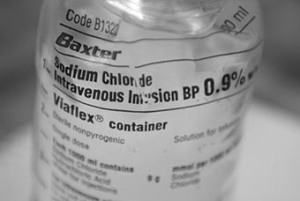Early fluid resuscitation in severe trauma
BMJ 2012;345:e5752
Critically injured trauma patients may have normal cardiovascular and respiratory parameters (pulse, blood pressure, respiratory rate), and no single physiological or metabolic factor accurately identifies all patients in this group.
According to the authors, initial resuscitation for severely injured patients is based on a strategy of permissive hypovolaemia (hypotension) (that is, fluid resuscitation delivered to increase blood pressure without reaching normotension, aiming for cerebration in the awake patient, or 70-80 mm Hg in penetrating trauma and 90 mm Hg in blunt trauma) and blood product based resuscitation. The authors believe:
This period of hypovolaemia (hypotension) should be kept to a minimum, with rapid transfer to the operating theatre for definitive care.
Crystalloid or colloid based resuscitation in severely injured patients is associated with worse outcome.
Once haemostasis has been achieved, resuscitation targeted to measures of cardiac output or oxygen delivery or use improves outcome.
Tranexamic acid administered intravenously within 3 h of injury improves mortality in patients who are thought to be bleeding.

